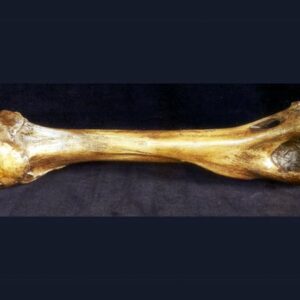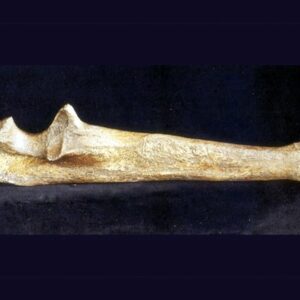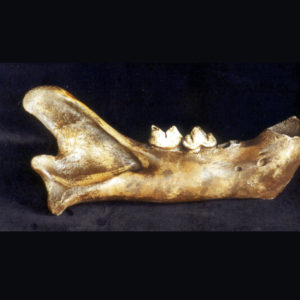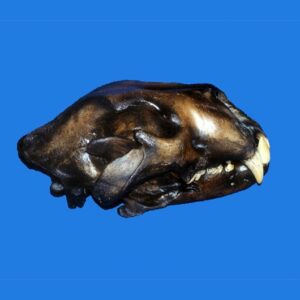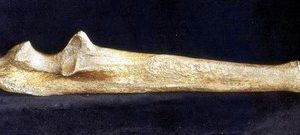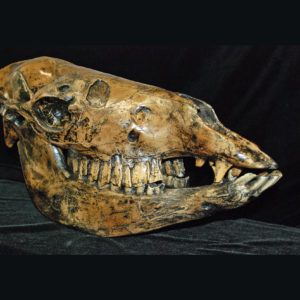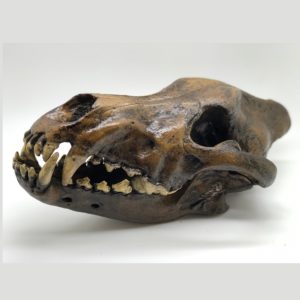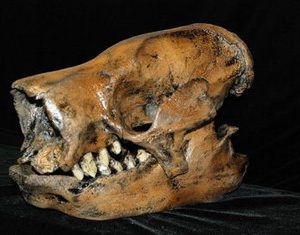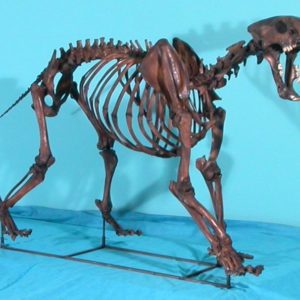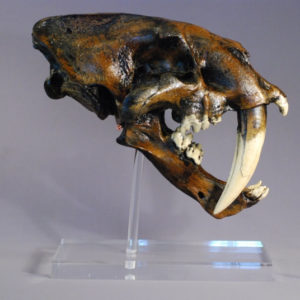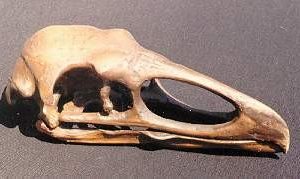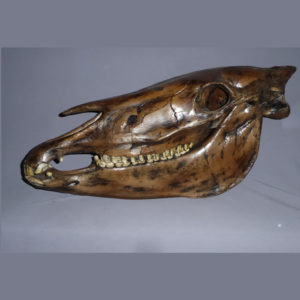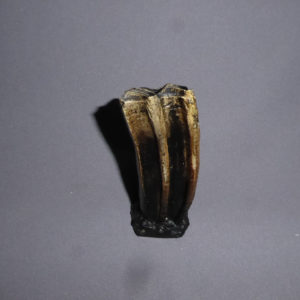All items sold on this website are polyurethane resin replicas, made in USA. No real or natural bone is available on this site.
La Brea Tar Pits Dinosaurs are museum quality resin casts. Dinsaurs are made in the USA. Skeletons and Skulls provides the finest osteological specimens for professional educational facilities.
The Tar Pits are a group of pits around which Hancock Park was formed, in urban Los Angeles. Asphaltum or tar has seeped up from the ground in this area for tens of thousands of years.
The tar is often covered with dust, leaves, or water. Over many centuries, the bones of animals that were trapped in the tar were preserved.
The George C. Page Museum is dedicated to researching the tar pits and displaying specimens from the animals that died there. The La Brea Tar Pits are a registered National Natural Landmark.
-
American Lion Disarticulated Skeleton
$17,000.00American Lion, also called the North American lion, or American cave lion, is an extinct pantherine cat. Panthera atrox lived in North America during the Pleistocene epoch, from around 340,000…
-
American Lion Humerus Bone
$140.00American Lion, also called the North American lion, or American cave lion, is an extinct pantherine cat. Panthera atrox lived in North America during the Pleistocene epoch, from around 340,000…
-
American Lion Radius Bone
$72.00American Lion, also called the North American lion, or American cave lion, is an extinct pantherine cat. Panthera atrox lived in North America during the Pleistocene epoch, from around 340,000…
-
American Lion Right Mandible
$140.00American Lion, also called the North American lion, or American cave lion, is an extinct pantherine cat. Panthera atrox lived in North America during the Pleistocene epoch, from around 340,000…
-
American Lion Skeleton Replica
$18,900.00The American lion or Panthera atrox is an extinct pantherine cat that lived in North America during the Pleistocene epoch about 340,000 to 11,000 years ago. Its fossils have been…
-
American Lion Skull Replica
$1,200.00American Lion, also called the North American lion, or American cave lion, is an extinct pantherine cat. Panthera atrox lived in North America during the Pleistocene epoch, from around 340,000…
-
American Lion Ulna Radius
$140.00American Lion, also called the North American lion, or American cave lion, is an extinct pantherine cat. Panthera atrox lived in North America during the Pleistocene epoch, from around 340,000…
-
Bison Antiquus Skull Replica
$1,500.00Bison antiquus, the antique bison or ancient bison, is an extinct species of bison that lived in Late Pleistocene North America until around 10,000 years ago. Bison antiquus was one…
-
Camelops Hesternus Skull Replica
$1,164.00Plant remains found in the teeth of the Rancho La Brea Camelops hesternus fossils further reveal that rather than being limited to grazing, this species likely ate mixed species of…
-
Dire Wolf Skeleton Mounted Replica
$9,500.00The Dire Wolf was nearly twice the size of modern wolves. The Dire Wolf of the Pleistocene epoch is the largest wolf species known to have existed. They were an…
-
-
Dire Wolf Skull Replica
$318.00The Dire Wolf was nearly twice the size of modern wolves. The Dire Wolf of the Pleistocene epoch is the largest wolf species known to have existed. They were an…
-
Glossotherium Harlans Ground Sloth Skeleton
$33,000.00Paramylodon is an extinct genus of Ground Sloth of the family Mylodontidae endemic to North America during the Pliocene through Pleistocene epochs, living from around ~4.9 Mya–12,000 years ago.
-
Harlans Ground Sloth Skeleton
$21,000.00Paramylodon harlani is an extinct genus of Ground Sloth of the family Mylodontidae endemic to North America during the Pliocene through Pleistocene epochs, living from around ~4.9 Mya–12,000 years ago.
-
Harlans Ground Sloth Skull
$1,249.00Paramylodon harlani is an extinct genus of Ground Sloth of the family Mylodontidae endemic to North America during the Pliocene through Pleistocene epochs, living from around ~4.9 Mya–12,000 years ago.
-
Panthera Atrox Right Manus
$249.00American Cave Lion is another name for the Panthera Atrox is also known as North American lion. Its fossils have been excavated from Alaska to Mexico. It was about 25…
-
Saber-tooth Cat Juvenile Skull
$242.00It is one of the most famous prehistoric mammals and the best known Saber-tooth Cat. Although commonly known as the Saber-toothed Tiger, it was not closely related to the tiger….
-
Saber-toothed Cat Skeleton Replica
$13,000.00The skull was robustly proportioned and the muzzle was short and broad. The cheek bones were deep and widely arched, the sagittal crest was prominent, and the frontal region was slightly…
-
Saber-toothed Cat Skull Replica
$485.00Many of their food sources were large mammals such as elephants, rhinos, and other colossal herbivores of the era. The evolution of enlarged canines in Tertiary carnivores was a result…
-
Saber-Tooth Cat Skull Replica
$378.00It is one of the most famous prehistoric mammals and the best known Saber-toothed Cat. Although commonly known as the Saber-toothed Tiger, it was not closely related to the tiger…
-
Shasta Ground Sloth Skull
$645.00Nothrotheriops is a genus of Pleistocene ground sloth found in North America, from what is now central Mexico to the southern United States. This genus of bear-sized xenarthran was related…
-
Teratornis Merriami Bird Skull
$182.00Teratornis merriami had a wingspan of around 11 to 12 ft. and a wing area of 17.5 square meters, standing an estimated 30 in. tall. It was somewhat larger than…
-
Western Horse Skull Fossil
$970.00Equus occidentalis (commonly known as the Western Horse) is an extinct species of wild horse that once inhabited North America, specifically the Southwestern United States, during the Pleistocene epoch.
-
Western Horse Tooth Replica
$27.00Equus occidentalis (commonly known as the Western Horse) is an extinct species of wild horse that once inhabited North America, specifically the Southwestern United States, during the Pleistocene epoch.



